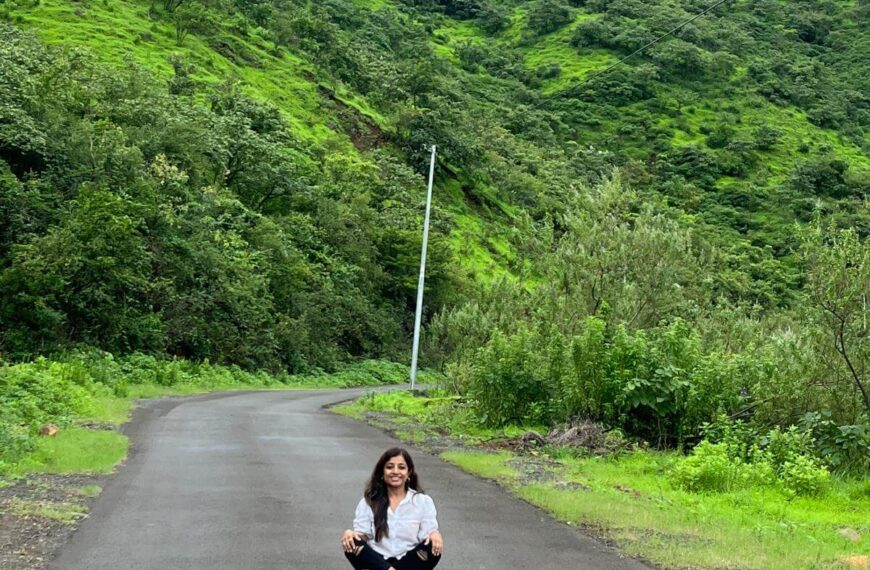Ruchira takes us on a tour of Hyderabad, a city replete with history, cuisine, monuments, silk and pearl. An exclusive for Different Truths.
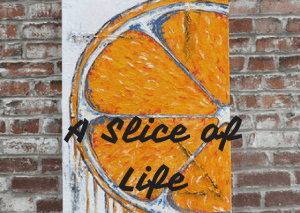 This bustling southern two historic sites city is synonymous with the Char Minar and Golconda. Quite naturally, therefore, I was super excited when a family trip to the fabled city was organised, a year or two ago. We landed at Hyderabad airport on a sunny humid morning in August. The sprawling state-of-the-art, yet picturesque Rajiv Gandhi International airport nearly took my breath away. As we threaded our way towards our host’s residence, I realised how the city was an amalgamation of old, medieval and modern.
This bustling southern two historic sites city is synonymous with the Char Minar and Golconda. Quite naturally, therefore, I was super excited when a family trip to the fabled city was organised, a year or two ago. We landed at Hyderabad airport on a sunny humid morning in August. The sprawling state-of-the-art, yet picturesque Rajiv Gandhi International airport nearly took my breath away. As we threaded our way towards our host’s residence, I realised how the city was an amalgamation of old, medieval and modern.
This bustling southern two historic sites city is synonymous with the Char Minar and Golconda. Quite naturally, therefore, I was super excited when a family trip to the fabled city was organised, a year or two ago. We landed at Hyderabad airport on a sunny humid morning in August. The sprawling state-of-the-art, yet picturesque Rajiv Gandhi International airport nearly took my breath away.
Modernity has swamped it by way of the establishment of Cybercity, the hub of information technology. It figures among the few IT hubs in the country, others being Bengaluru and Gurugram. The first thing that we did a few hours after our arrival was to tuck in the city’s famous delicacies namely bagada baingan, mirch ka salan, etc washed down with the heavenly double ka meetha, a cousin of the shahi tukda, so popular in the north. As for the fabled Hyderabadi Biriyani, we shall come to that later.
The Char Minar was on top of our list of sightseeing choices. This hallmark of the architecture pertaining to the Qutub Shahi dynasty is stunning at first glance. Built-in 1591, it is a unique combination of a monument and a mosque. Its top floor housed a mosque for several centuries. If you can manage to clamber up the narrow, dank, dark, spiral staircase to the top, you may catch a breathtaking view of the sprawling city, as well as the imposing Makka Masjid in the vicinity. The local markets nearby do brisk business and are a veritable paradise for food lovers and shopping freaks.
A visit to the Salar Jang Museum was mandatory. Originally owned by Nawab Mir Yousuf Ali Khan, a scion of Hyderabad’s noted Salar Jung clan, and an erstwhile during the Nizam’s rule, the collection of is to be seen to be believed. After all, the gentleman spent a substantial portion of his resources, acquiring artefacts from across the globe for thirty-five long years. The most outstanding ones include bejewelled daggers of noted Mughal personalities, an array of pan-European clocks, western furniture, a replica of Benzoni’s immortal sculpture, Veiled Rebecca
A visit to the Salar Jung Museum was mandatory. Originally owned by Nawab Mir Yousuf Ali Khan, a scion of Hyderabad’s noted Salar Jung clan, and an erstwhile 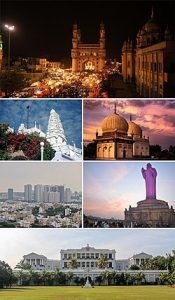 during the Nizam’s rule, the collection is to be seen to be believed. After all, the gentleman spent a substantial portion of his resources, acquiring artefacts from across the globe for thirty-five long years. The most outstanding ones include bejewelled daggers of noted Mughal personalities, an array of pan-European clocks, western furniture, a replica of Benzoni’s immortal sculpture, Veiled Rebecca, several European masterpieces and even an ornate palanquin! To do justice to your visit you need at least half a day.
during the Nizam’s rule, the collection is to be seen to be believed. After all, the gentleman spent a substantial portion of his resources, acquiring artefacts from across the globe for thirty-five long years. The most outstanding ones include bejewelled daggers of noted Mughal personalities, an array of pan-European clocks, western furniture, a replica of Benzoni’s immortal sculpture, Veiled Rebecca, several European masterpieces and even an ornate palanquin! To do justice to your visit you need at least half a day.
Next, we headed to the placid Hussein Sagar Lake. Located in the heart of the city, it is one of the largest manmade lakes in Asia. It was originally built on the tributary of the local Musi river by Hussain Shah, a benevolent Sufi saint of the 16th century. The lake links the city with its twin Secunderabad. The lake’s beauty is further enhanced by a massive monolith statue of Lord Buddha, reposing in tranquillity on a pedestal at the centre of the lake. An epitome of communal harmony. It was in the neighbourhood of the lake that we finally got to sample the piece de resistance of the city, its famous cuisine. By far, the best place to eat biriyani is the Paradise chain of eateries located at numerous places across the twin cities. After a good deal of waiting, we finally managed to grab a table for ourselves. And the dish was mind-blowing! Ample proportions at a pocket-friendly price it turned out to be a memorable family luncheon.
Golconda Fort also figured on our itinerary (the name literally means round hill ). From 1518 to 1591, it was the capital of the Quṭb Shāhī kingdom, one of five Islamic sultanates of the Deccan. Within the premises of the fort palaces, mosques, and tombs still stand, acting as major crowd pullers. Geographically, the conglomerate rocks of the nearby hills were renowned for yielding priceless world-famous diamonds viz., Koh- i-Noor, and Hope among many more.
Golconda Fort also figured on our itinerary (the name literally means round hill ). From 1518 to 1591, it was the capital of the Quṭb Shāhī kingdom, one of five Islamic sultanates of the Deccan. Within the premises of the fort palaces, mosques, and tombs still stand, acting as major crowd pullers. Geographically, the conglomerate rocks of the nearby hills were renowned for yielding priceless world-famous diamonds viz., Koh- i-noor, and Hope among many more. In case you are looking for some modernistic sightseeing, Ramoji Film City is the perfect place for you! It has been certified by the Guinness World Records, as the largest studio complex in the world.
For Eve, Hyderbad holds more attractions. Gorgeous silk saris and more importantly the famous Hyderabadi pearls. Here is a shout out to the ladies: come to Hyderabad to shop, shop, till you drop!
Photos from the Internet

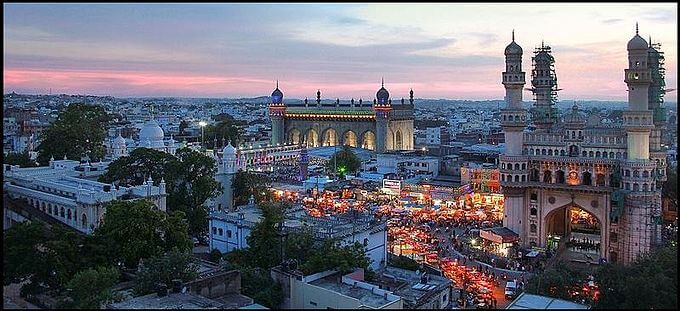



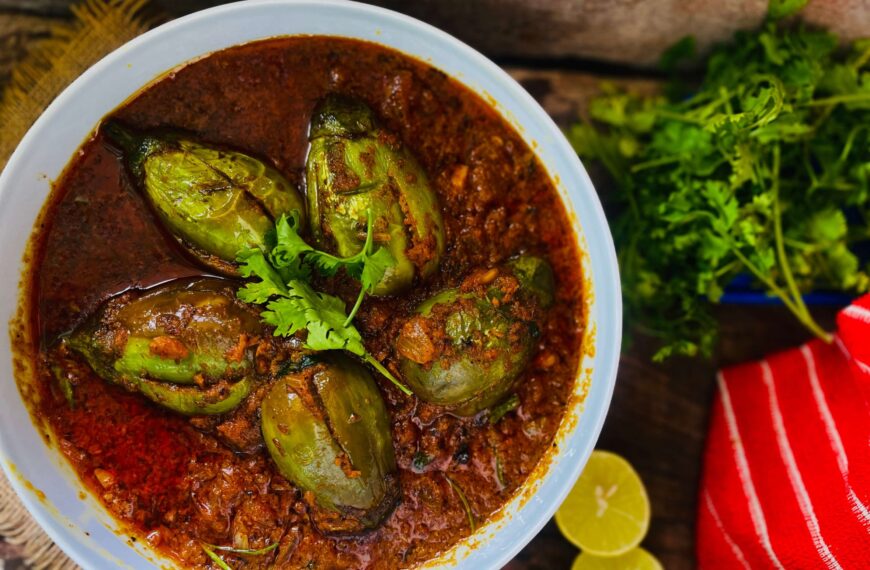

 By
By